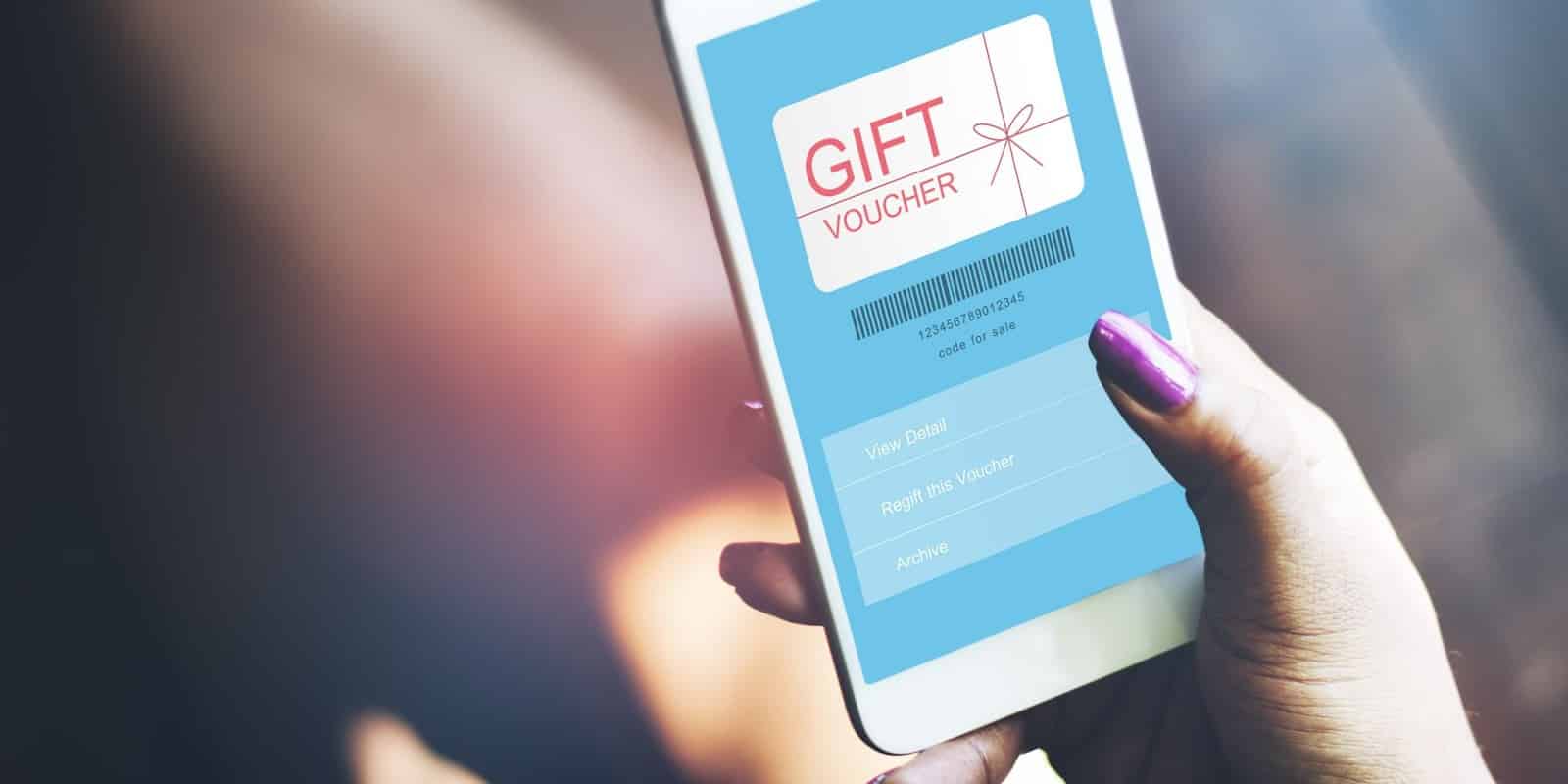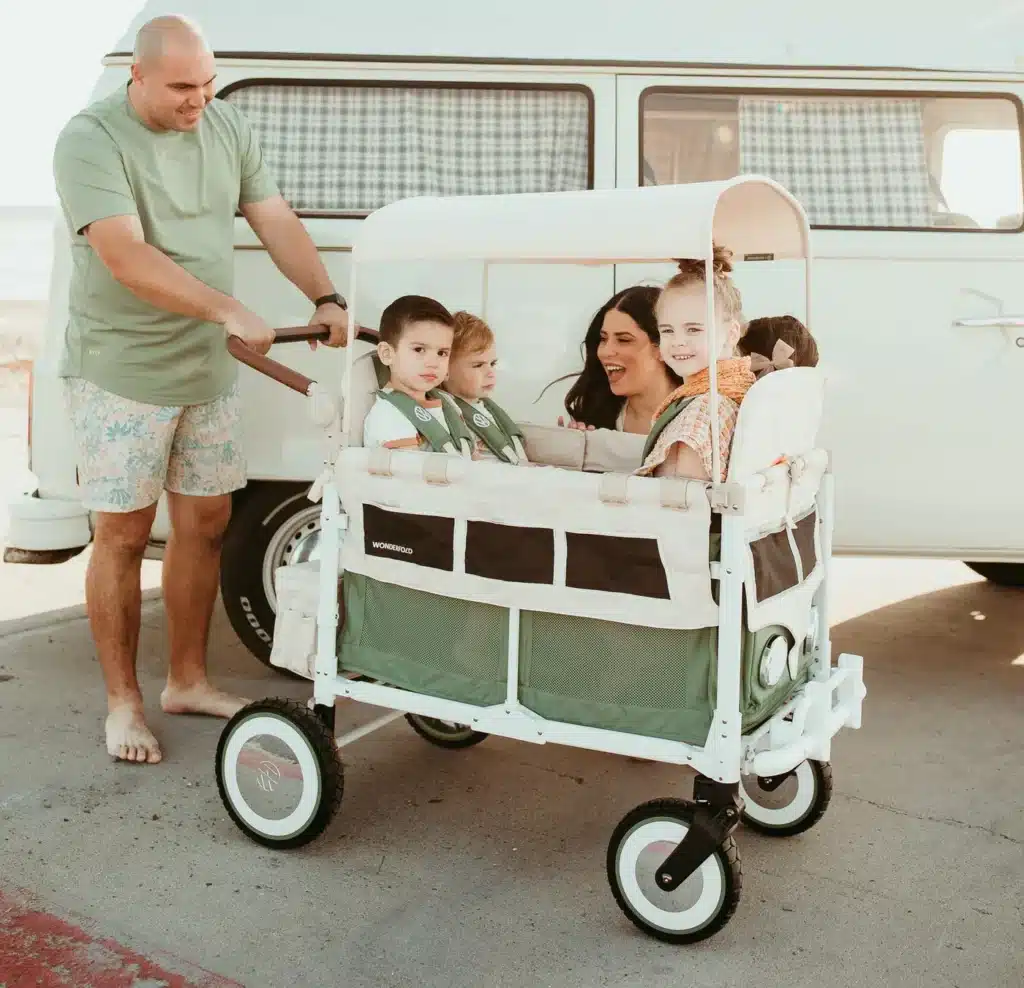How To Set Up a Brand Ambassador Program

How To Set Up a Successful Brand Ambassador Program for Your Company
Brand ambassador programs are among the most powerful methods brands can use to promote their products or services. Strategies that rely on ambassador marketing programs combine the use of word-of-mouth marketing, the popularity of social media and more authentic relationships that small-scale influencers build with their audiences. This way, they create communities centered on genuine love for your brand and the values your company promotes.
Like with other marketing efforts, setting up a brand ambassador program requires skill, resources and a good plan. In this guide, we’ll show you the key strategies for setting up great brand ambassador programs and highlight brands with some of the best ambassador programs for inspiration.
What Is a Brand Ambassador Program?
Brand ambassadors are a grassroots marketing tool that puts emphasis on building and leveraging genuine long-term relationships between brands and customers who spread the word and recommend the brands’ products or services in their social circles or communities. Recruiting and managing brand ambassadors needs to be an organized process with clearly defined guidelines and compensation systems, and that’s why this type of marketing demands carefully established yet practical brand ambassador programs.
Anyone who loves your products and services, who is ready to talk about them on social media and who meets any other specific criteria of your ambassadorship program can become a valued brand ambassador. Most retail companies source their ambassadors from the following groups:
- Loyal customers
- Their own employees
- Industry experts
- Nano and micro-influencers or other digital content creators

How are Brand Ambassador Programs Different from Influencer Marketing?
The use of smaller-scale influencers doesn’t mean that ambassador and influencer marketing are the same. Although both brand ambassadors and influencers promote brands, there are several major reasons why ambassador programs have the edge over influencer marketing:
| Brand Ambassador Programs | Influencer Marketing |
| They nurture long-term relationships between brands and ambassadors that usually last for at least a year. | Partnerships are based on one-off collaborations or short-term contracts. |
| Ambassador programs are aimed at building authentic relationships with customers to foster customer loyalty. | The main goal of influencer marketing is to promote and advertise the company and its products. |
| Ambassador programs prefer smaller social media content creators with more modest follower bases. | Influencers are often social media celebrities and viral content creators that have hundreds of thousands or millions of followers. |
| Brand ambassadors operate within a specific niche. | Influencers create more general content based on trends. |
| Ambassadors use word-of-mouth methods to promote your brand on location and on social media. | Influencers operate only on social media. |
Types of Brand Ambassador Programs
Brands usually choose from six types of brand ambassador programs, depending on the goals of the campaign and the type of ambassadors they opt for.
Ambassador programs can be:
- Requirement-based programs—Ambassadors are expected to complete a set of defined tasks within a specified time span. For example, they may be required to upload five Instagram posts with a goal to generate 10,000 impressions in a month.
- Affiliate programs—Affiliate ambassadors promote products and services on their own platforms (social media accounts or blogs) and use unique affiliate URLs to track their sales. In return, they receive a commission for each completed sale.
- Informal programs—Brands may offer open invitations where anyone who loves the brand can become a brand ambassador. There are no signed contracts or big rewards in this type of program, but high-performing ambassadors may receive incentives like free products and exclusive discounts.
- Employee ambassador programs—Some brands use their employees to promote products or services due to their deep understanding of product features and brand values. They can follow strictly defined guidelines or use their own voices in their content for more authenticity.
- Customer ambassador programs—For these programs, brands identify and handpick a few loyal customers and train them to promote the business in question according to the company’s goals.
- Student ambassador program—Some brands like Red Bull use college students as ambassadors since they cater to that demographic or want to build relationships with their future customers based on hobbies, sports, interests, etc.
What Are the Benefits of Brand Ambassador Programs for Businesses?
Apart from the obvious—improved sales and increased brand awareness and reach—using ambassadors to promote your business brings several additional benefits:
- Ambassadors humanize the brand—They act as the face of the brand, which consumers can relate to. They are more likely to buy your products if they are represented by actual people rather than logos and traditional ads.
- Ambassadors are trusted by consumers—According to a Nielsen study, 92% of consumers trust word-of-mouth marketing over other marketing approaches. This means brands can enjoy a rise in sales as ambassador programs primarily rely on this form of marketing.
- They boost your social media presence—The use of ambassador programs means that multiple ambassadors create organic content that you can share on your official social media accounts or have them post it on their profiles. Through your ambassadors’ socials, you can reach wider audiences or ease the content production responsibilities of your marketing team.
- They improve communication between customers and brands—Ambassadors receive valuable feedback and opinions regarding your products directly from your target audience. The feedback can be used to improve your products and your general marketing strategy.
- Ambassador programs are economical to set up—Comparable forms of marketing, such as influencer marketing and paid social media ads, can get quite expensive for businesses. Since ambassadors are mostly compensated through rewards rather than cash, ambassador programs are way more affordable and still bring excellent marketing results.
- Ambassadors nurture and strengthen genuine relationships with your target consumers—Unlike influencers with out-of-this-world follower numbers, ambassadors tend to have real-life connections to their followers. This brings increased lifetime value for brands as participants and their followers traditionally demonstrate an increase in average order values and the purchase frequency—which is rarely observed in influencer campaigns.

How to Create a Brand Ambassador Program
Building a good brand ambassador program should start by defining a specific end goal, such as:
- Increasing brand awareness
- Driving conversions
- Boosting product sales
- Changing the brand’s public perception
- Finding new customers
Once you have determined the campaign objectives, you can begin the step-by-step process of setting up and managing your brand ambassador program.
Make a Brand Ambassador Program Outline
The first step of setting up your brand ambassador program is to come up with an overall idea of how your program will work. At this stage, there are two main activities:
- Develop brand ambassador guidelines that ambassadors will follow when promoting your brand on social media—This includes coming up with a strong social media policy and a style guide for the content they’ll be creating. As you set ambassador guidelines, make sure that your ambassadors still have enough freedom to be authentic and use their own ideas when promoting your brand to keep interactions organic.
- Decide on the compensation system—Ambassadors are mainly rewarded with free products, discounts, access to brand events, etc. You can also consider monetary compensation—cash rewards for referrals, completed activities, and sales commissions. In the end, you should use a compensation structure that suits your ambassador program goals, budget, and current circumstances
Find and Recruit Your Brand Ambassadors
When setting up your brand ambassador program, you should first define what type of ambassadors the company needs—you can choose between brand enthusiasts, niche experts, micro-influencers, established content creators, or a mix of all these categories. In any case, you should pick people who align with your brand values and marketing objectives.
There are several ways brands can identify and recruit suitable ambassadors:
- Post on social media—You can use tools like Instagram Stories to let followers know about applications for your ambassador program or contact followers who engage with you the most via direct messages. Social media enables you to recruit your future representatives directly from a pool of followers and existing customers.
- Take advantage of your email list—You can send the information about your new program to the people on your email list. If there are specific people who interact with your emails more, contact them directly as they are more likely to accept your invitation.
- Promote your ambassadorship program with each purchase—You can invite customers to join it by adding links to the purchase or shipping confirmation emails they receive.
- Approach customers at brand events—Seminars, product launches, workshops, and other similar events are great for networking with people who love your brand. Ask these enthusiasts whether they want to join your program. You can also provide more info to the customers when they visit your shop or office.
- Contact people who have expressed interest in helping—Many small businesses receive requests from customers who are passionate about the company’s product via social media and just want to help. Reach out to these individuals and ask if they’re interested in joining your brand ambassador program.
Provide Training and Offer Support to Your Brand Ambassadors
Once you have a team of ambassadors for your program, you should train them and improve their marketing skills by signing them up for workshops and short courses—this will enable them to promote your brand more effectively.
With ambassadors equipped and ready for the campaign, brands should provide ambassadors with the assets they need for their activities. For instance, if a company is launching a new product, it should provide free samples to its ambassadors so they can test it and have enough knowledge to talk about the product.
You can also invite them to company events and provide exclusive insider information that is relevant to their marketing activities.
Offer Rewards and Provide Compensation
When it comes to ambassador marketing, compensation doesn’t have to mean money. Most companies reward their ambassadors with:
- Free products
- Gift cards
- Discounts
- Early access to new or unreleased products
- Participation in exclusive company events
Some companies, especially big ones, may offer their ambassadors cash. Pepsi, for instance, had a student ambassador program with stipends for their ambassadors.
Apart from giving rewards, showing appreciation to your ambassadors is also essential—brands can show appreciation by:
- Sending personal thank-you notes
- Giving ambassadors shoutouts on social media
- Doing a special ambassador feature on the company blog
- Developing an “ambassador of the month” series for different social media
These seemingly small acts can motivate your ambassadors to work even harder, increasing the effectiveness of your program.

Track Your Brand Ambassadors’ Performance
There is plenty of information and brand ambassador activity you ought to keep track of once your program is up and running—you need to pay attention to the following:
- The number of user-generated content pieces
- Brand reach
- Impressions and engagement
- Related sales
- Issued rewards
Monitoring these metrics will help you meet your campaign goals and get the most out of your program.
Best Practices To Enhance Your Brand Ambassador Program
Setting up a brand ambassador program from scratch is not easy, but once you get there, it doesn’t mean your job is done. You need to find ways to manage it successfully and ensure it’s always running at the optimal level to reap the benefits.
One of the best ways to stay on top of your brand ambassador program is by working on the communication with your ambassadors:
- Offer suggestions—Communication between ambassadors and brands should go both ways. As a brand, you should offer feedback and suggestions regarding the performance of the campaign. Let your ambassadors know what they should improve based on relevant data and insights.
- Ask for feedback—Brands should also ask ambassadors for feedback about their products and the program itself. As a part of your target audience, ambassadors have valuable suggestions and perspectives that can make the campaign resonate more with other consumers.
- Create a community—You can boost team spirit and build stronger ties with your ambassadors by creating an exclusive brand ambassador community. Use the community to share insider info, such as internal company newsletters and updates on upcoming products.
- Be available—Brand ambassadors should be able to contact you for clarifications and suggestions. This ensures that ambassador marketing activities flow smoothly and enables ambassadors to meet their daily objectives.
- Adjust your program when necessary—Over time, your target audience may change or grow, meaning you will have to tweak your ambassador program to accommodate the changes. Your analytics will also guide you on the aspects of the program that you need to adjust.

Good Examples of Companies With Brand Ambassador Programs
Ambassador marketing isn’t a new concept—numerous businesses have been using brand ambassador programs to expand their enterprise for a while. Here are some of the best brand ambassador program examples to inspire you:
| Brand Ambassador Program | What Makes the Program Successful |
| Adobe Creative Ambassador Program | It offers extensive training to ambassadors so they can build their expertise and promote the brand more effectively. |
| Yelp Elite Squad | The brand recruits new ambassadors and re-vets existing reps every year to make sure there’s always a high-quality pool of ambassadors with matching goals. |
| Xbox Ambassadors | The brand constantly rewards its ambassadors through free merch, hidden game levels, free newly-released games, and entry into exclusive competitions—this ensures ambassadors are always happy and motivated to promote the brand. |
All these programs have been running for years because they are well-maintained and have been optimized to meet different objectives—you can do the same for your ambassador marketing strategy.
Set Up a Winning Ambassador Program With BrandChamp
Creating a successful ambassador strategy involves plenty of tasks—you have to find ambassadors, recruit them, provide them with the right resources for different campaigns, set up reward tiers and systems, issue out rewards and many other activities. Handling all of this can be demanding and time-consuming for ambassador program admins, especially if they’re doing it manually.
Without a proper support system, running a brand ambassador program is virtually impossible, and that is where we can help you. BrandChamp presents a software solution designed to automate the activities and processes of ambassador marketing programs for both managers and ambassadors.
What BrandChamp Offers
Our platform promotes the values of genuine customer relationships and togetherness, which are the keys to successful ambassador programs. BrandChamp enables admins and ambassadors to streamline their day-to-day tasks and activities and build a better, more closely knit community.
Take a look at some of the benefits our platform brings to both admins and ambassadors:
| Admins | Ambassadors |
|
|
We Have Helped Numerous Brands Develop and Scale Their Ambassador Programs
By using our platform, many companies have been able to automate and improve the process of managing their brand ambassadors. Our clients have considerably boosted brand awareness, sales and return on investment soon after choosing BrandChamp.
Here are some of the most inspiring examples.
Herbaland

Canada’s largest nutritional gummy manufacturer signed up for our platform to automate ambassador management activities. The brand was initially working with a few customers as brand ambassadors—the management of the ambassadors was manual, and it became overwhelming for the ambassador program admin. Soon after, the company discovered BrandChamp and was able to smooth out its ambassador program by:
- Cultivating stronger relationships with ambassadors.
- Launching and expanding the brand’s Facebook group.
- Creating tiered commission structures.
- Email-targeting specific ambassadors.
- Issuing out rewards for completed activities automatically.
LiCi Fit
This women’s sportswear brand had a group of fans reaching out to be ambassadors, but the brand couldn’t take them on as they didn’t have the tools or the manpower to manage an ambassador program—that’s when they discovered BrandChamp.
Our platform enabled LiCi Fit to nurture authentic relationships with their ambassadors as the brand was able to customize our software to their needs and create a points-based reward system to reward ambassadors more quickly. With a strong customer community working together on BrandChamp, the brand also boosted its sales and increased revenue.
Passion Planner
After experiencing issues with the brand loyalty app Passion Planner was using to manage its ambassadors, the company went on to search for a new platform and found ours.
With BrandChamp’s help, the company was able to meet its two main objectives—to build a strong ambassador community and engage more with its target audience.

Passion Planner currently has over 900 ambassadors that they’re managing with ease by customizing our platform to their needs, setting up ambassador activities, and having fast and efficient communication with each ambassador.
To build or scale your brand ambassador program the easy way, reach out to our team and start reaping the benefits of word-of-mouth marketing for your company.






